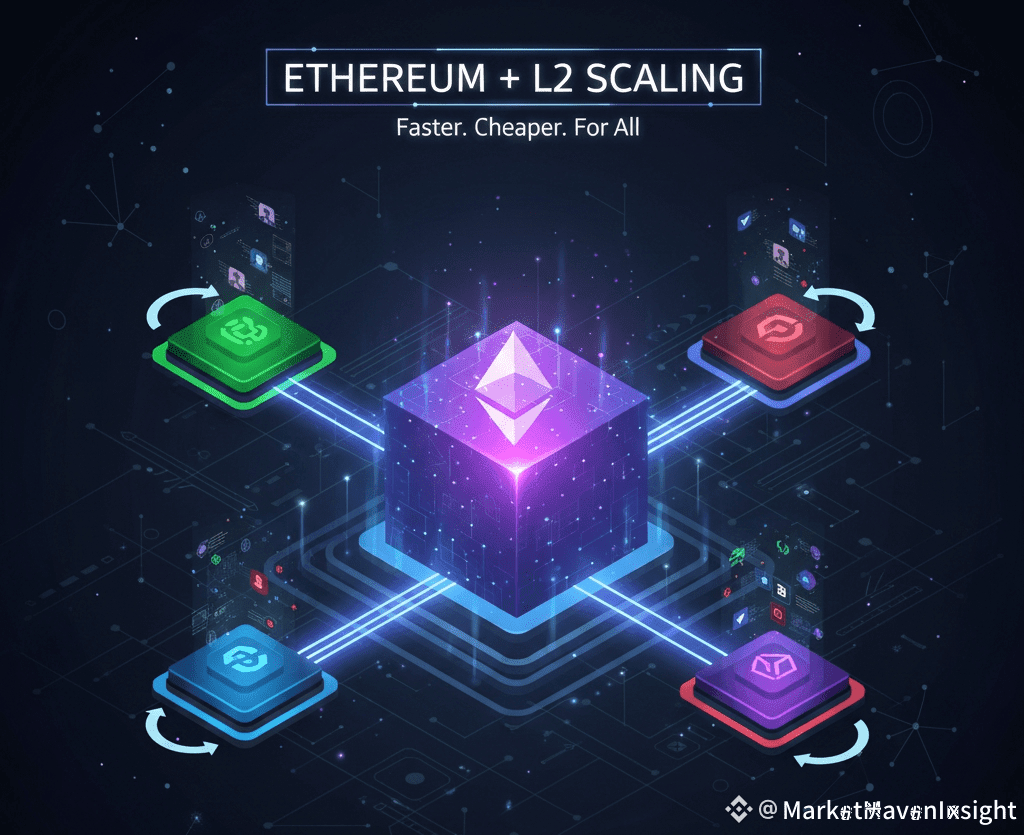Ethereum’s scalability issues have long been a barrier — but 2025 is shaping up to be the year that many L2 networks go from niche to mainstream. With rising adoption, growing total value locked (TVL), and real-world use cases, L2s are strongly positioning themselves as the backbone of Ethereum’s future.
What the Data Says — L2s Are Growing Fast
According to recent data, the combined TVL across most major Ethereum L2 networks has surpassed $50 billion.
Top L2 players today:
Arbitrum — still the leader in L2 DeFi and adoption, hosting a large share of liquidity and active protocols.
Optimism — a major optimistic‑rollup network, known for EVM compatibility and broad developer support.
zkSync Era — a ZK‑rollup rising in adoption, offering low fees and fast confirmations; gaining ground among newer projects.
Others like Base, Starknet, etc. — expanding ecosystem and drawing diverse use‑cases.
This surge reflects a >200% growth in L2 TVL compared to 2023 levels.
Why L2s Are Gaining Momentum — What’s Changed
Lower fees & faster transactions: Compared to Ethereum mainnet, L2s dramatically reduce gas costs and speed up transaction times — making DeFi, NFTs, gaming, and micro‑transactions practical for the masses.
DeFi & dApp migration: Many decentralized apps and protocols are shifting to L2 networks for better UX and lower costs. This is driving liquidity, developer interest, and user activity.
TVL & ecosystem robustness: With billions locked in L2s, and multiple major rollups active, the infrastructure is proving stable. Liquidity, security, and developer support are all maturing.
Scalability & user growth: L2s enable Ethereum to support many more users without congesting the mainnet — potentially unlocking mass adoption for DeFi, NFTs, and Web3 apps.
What This Means for Investors & Users
Lower entry barrier: With cheap fees and fast confirmations, even small trades, micro‑investments, or NFT minting are now feasible — a shift from when Ethereum gas costs were prohibitive.
Better ROI potential: Projects on L2 have lower overhead and overhead-based risk; this can make DeFi yields, liquidity provision, or dApp tokens more viable.
Diverse portfolio opportunity: Instead of betting only on ETH or L1 coins, exposure to well‑structured L2 ecosystems (or projects built on them) can diversify risk + capture upside.
Long-term growth play: As adoption increases and more real‑world use‑cases (gaming, payments, NFTs, tokenized assets) move to L2, early participation may pay off if you choose promising, well‑audited projects.
What to Watch & Risks to Consider?
TVL measurement caution: While TVL is high, not all “locked value” is equally secure — some protocols may rely on bridged assets or wrapped tokens. Always check audit history & liquidity.
Ecosystem fragmentation: With multiple L2s competing (optimistic rollups, ZK rollups, side‑chains, etc.), liquidity and developer focus may scatter — increasing risk for smaller protocols.
Security & centralization trade‑offs: Some L2s still rely on semi‑centralized sequencers or bridges; this adds some risk compared to fully decentralized chains.
User adoption & migration friction: For users and dApps — bridging assets, wallet compatibility, and user education remain blockers; success depends on smooth UX and real-world demand.
Final Take
Ethereum Layer‑2 networks in 2025 aren’t just “the future” — they’re the present backbone that could redefine how we use crypto.
With billions locked and active ecosystems, L2s are turning Ethereum from a congested network into a scalable platform for mass adoption. Whether you’re a trader, investor, or developer — keeping an eye on leading L2s like Arbitrum, Optimism, zkSync Era, Base and more might give you the edge before the next big wave.
For long‑term growth, exposure to well‑built L2 projects could be a smart bet — especially as decentralized finance, NFTs, gaming, and real-world asset tokenization demand speed, security, and low cost.

